Let us know your thoughts! Sign up for a Mindplex account now, join our Telegram, or follow us on Twitter.
Sanitation Danger at Burning Man | Highlights from S2EP2
Breaking Ground in 3D Modeling: Unveiling 3D-GPT
Researchers from the Australian National University, University of Oxford, and Beijing Academy of Artificial Intelligence have collaboratively developed a groundbreaking framework known as 3D-GPT for instruction-driven 3D modeling.
The framework leverages large language models (LLMs) to dissect procedural 3D modeling tasks into manageable segments and appoints the appropriate agent for each task.
The paper begins by highlighting the increasing use of generative AI systems in various fields such as medicine, news, politics, and social interaction. These systems are becoming more widespread and are used to create content across different formats. However, as these technologies become more prevalent and integrated into various applications, concerns arise regarding public safety. Consequently, evaluating the potential risks posed by generative AI systems is becoming a priority for AI developers, policymakers, regulators, and civil society.
To address this issue, the researchers introduce 3D-GPT, a framework that utilizes large language models (LLMs) for instruction-driven 3D modeling. The framework positions LLMs as proficient problem solvers that can break down the procedural 3D modeling tasks into accessible segments and appoint the apt agent for each task.
The 3D-GPT framework integrates three core agents: the task dispatch agent, the conceptualization agent, and the modeling agent. They work together to achieve two main objectives. First, they enhance initial scene descriptions by evolving them into detailed forms while dynamically adapting the text based on subsequent instructions. Second, they integrate procedural generation by extracting parameter values from enriched text to effortlessly interface with 3D software for asset creation.
The task dispatch agent plays a crucial role in identifying the required functions for each instructional input. For instance, when presented with an instruction such as “translate the scene into a winter setting”, it pinpoints functions like add snow layer() and update trees(). This pivotal role played by the task dispatch agent is instrumental in facilitating efficient task coordination between the conceptualization and modeling agents. From a safety perspective, the task dispatch agent ensures that only appropriate and safe functions are selected for execution, thereby mitigating potential risks associated with the deployment of generative AI systems.
The conceptualization agent enriches the user-provided text description into detailed appearance descriptions. After the task dispatch agent selects the required functions, we send the user input text and the corresponding function-specific information to the conceptualization agent and request augmented text. In terms of safety, the conceptualization agent plays a vital role in ensuring that the enriched text descriptions accurately represent the user’s instructions, thereby preventing potential misinterpretations or misuse of the 3D modeling functions.

The modeling agent deduces the parameters for each selected function and generates Python code scripts to invoke Blender’s API. The generated Python code script interfaces with Blender’s API for 3D content creation and rendering. Regarding safety, the modeling agent ensures that the inferred parameters and the generated Python code scripts are safe and appropriate for the selected functions. This process helps to avoid potential safety issues that could arise from incorrect parameter values or inappropriate function calls.
The researchers conducted several experiments to showcase the proficiency of 3D-GPT in consistently generating results that align with user instructions. They also conducted an ablation study to systematically examine the contributions of each agent within their multi-agent system.
Despite its promising results, the framework has several limitations. These include limited curve control and shading design, dependence on procedural generation algorithms, and challenges in processing multi-modal instructions. Future research directions include LLM 3D fine-tuning, autonomous rule discovery, and multi-modal instruction processing.
In summary, the research paper introduces a novel framework that holds promise in enhancing human-AI communication in the context of 3D design and delivering high-quality results.
Let us know your thoughts! Sign up for a Mindplex account now, join our Telegram, or follow us on Twitter.
We Need AI Sourcecode To Be Transparent | Highlights from S2EP2
Transcendent questions on the future of AI: New starting points for breaking the logjam of AI tribal thinking
Going nowhere fast
Imagine you’re listening to someone you don’t know very well. Perhaps you’ve never even met in real life. You’re just passing acquaintances on a social networking site. A friend of a friend, say. Let’s call that person FoF.
FoF is making an unusual argument. You’ve not thought much about it before. To you, it seems a bit subversive.
You pause. You click on FoF’s profile, and look at other things he has said. Wow, one of his other statements marks him out as an apparent supporter of Cause Z. (That’s a cause I’ve made up for the sake of this fictitious dialog.)
You shudder. People who support Cause Z have got their priorities all wrong. They’re committed to an outdated ideology. Or they fail to understand free market dynamics. Or they’re ignorant of the Sapir-Whorf hypothesis. Whatever. There’s no need for you to listen to them.
Indeed, since FoF is a supporter of Cause Z, you’re tempted to block him. Why let his subversive ill-informed ideas clutter up your tidy filter bubble?
But today, you’re feeling magnanimous. You decide to break into the conversation, with your own explanation of why Cause Z is mistaken.
In turn, FoF finds your remarks unusual. First, it’s nothing to do with what he had just been saying. Second, it’s not a line of discussion he has heard before. To him, it seems a bit subversive.
FoF pauses. He clicks on your social media profile, and looks at other things you’ve said. Wow. One of your other statements marks you out as an apparent supporter of Clause Y.
FoF shudders. People who support Cause Y have got their priorities all wrong.
FoF feels magnanimous too. He breaks into your conversation, with his explanation as to why Cause Y is bunk.
By now, you’re exasperated. FoF has completely missed the point you were making. This time you really are going to block him. Goodbye.
The result: nothing learned at all.
And two people have had their emotions stirred up in unproductive ways. Goodness knows when and where each might vent their furies.

Trying again
We’ve all been the characters in this story on occasion. We’ve all missed opportunities to learn, and, in the process, we’ve had our emotions stirred up for no good reason.
Let’s consider how things could have gone better.
The first step forward is a commitment to resist prejudice. Maybe FoF really is a supporter of Cause Z. But that shouldn’t prejudge the value of anything else he also happens to say. Maybe you really are a supporter of Cause Y. But that doesn’t mean FoF should jump to conclusions about other opinions you offer.
Ideally, ideas should be separated from the broader philosophies in which they might be located. Ideas should be assessed on their own merits, without regard to who first advanced them – and regardless of who else supports them.
In other words, activists must be ready to set aside some of their haste and self-confidence, and instead adopt, at least for a while, the methods of the academy rather than the methods of activism.
That’s because, frankly, the challenges we’re facing as a global civilization are so complex as to defy being fully described by any one of our worldviews.
Cause Z may indeed have useful insights – but also some nasty blindspots. Likewise for Cause Y, and all the other causes and worldviews that gather supporters from time to time. None of them have all the answers.
On a good day, FoF appreciates that point. So do you. Both of you are willing, in principle, to supplement your own activism with a willingness to assess new ideas.
That’s in principle. The practice is often different.
That’s not just because we are tribal beings – having inherited tribal instincts from our prehistoric evolutionary ancestors.
It’s also because the ideas that are put forward as starting points for meaningful open discussions all too often fail in that purpose. They’re intended to help us set aside, for a while, our usual worldviews. But all too often, they have just a thin separation from well-known ideological positions.
These ideas aren’t sufficiently interesting in their own right. They’re too obviously a proxy for an underlying cause.
That’s why real effort needs to be put into designing what can be called transcendent questions.
These questions are potential starting points for meaningful non-tribal open discussions. These questions have the ability to trigger a suspension of ideology.
But without good transcendent questions, the conversation will quickly cascade back down to its previous state of logjam. That’s despite the good intentions people tried to keep in mind. And we’ll be blocking each other – if not literally, then mentally.
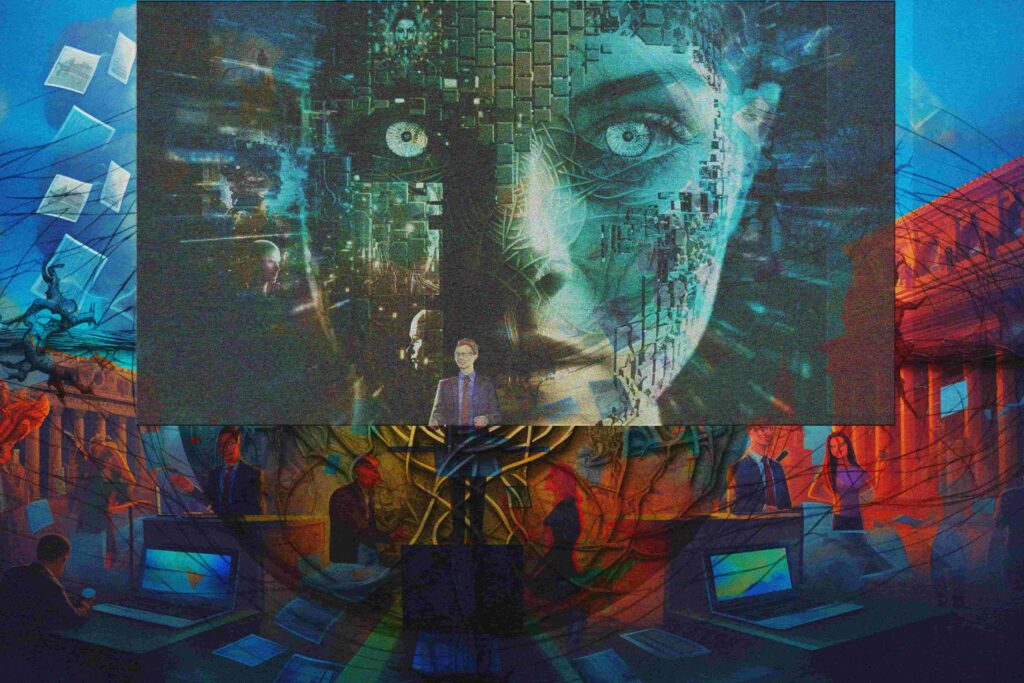
The AI conversation logjam
Within discussions of the future of AI, some tribal positions are well known –
One tribal group is defined by the opinion that so-called AI systems are not ‘true’ intelligence. In this view, these AI systems are just narrow tools, mindless number crunchers, statistical extrapolations, or stochastic parrots. People in this group delight in pointing out instances where AI systems make grotesque errors.
A second tribal group is overwhelmed with a sense of dread. In this view, AI is on the point of running beyond control. Indeed, Big Tech is on the point of running beyond control. Open-source mavericks are on the point of running beyond control. And there’s little that can be done about any of this.
A third group is focused on the remarkable benefits that advanced AI systems can deliver. Not only can such AI systems solve problems of climate change, poverty and malnutrition, cancer and dementia, and even aging. Crucially, they can also solve any problems that earlier, weaker generations of AI might be on the point of causing. In this view, it’s important to accelerate as fast as possible into that new world.
Crudely, these are the skeptics, the doomers, and the accelerationists. Sadly, they often have dim opinions of each other. When they identify a conversation partner as being a member of an opposed tribe, they shudder.
Can we find some transcendent questions, which will allow people with sympathies for these various groups to overcome, for a while, their tribal loyalties, in search of a better understanding? Which questions might unblock the AI safety conversation logjam?

A different starting point
In this context, I want to applaud Rob Bensinger. Rob is the communications lead at an organization called MIRI (the Machine Intelligence Research Institute).
(Just in case you’re tempted to strop away now, muttering unkind thoughts about MIRI, let me remind you of the commitment you made, a few paragraphs back, not to prejudge an idea just because the person raising it has some associations you disdain.)
(You did make that commitment, didn’t you?)
Rob has noticed the same kind of logjam and tribalism that I’ve just been talking about. As he puts it in a recent article:
Recent discussions of AI x-risk in places like Twitter tend to focus on “are you in the Rightthink Tribe, or the Wrongthink Tribe?” Are you a doomer? An accelerationist? An EA? A techno-optimist?
I’m pretty sure these discussions would go way better if the discussion looked less like that. More concrete claims, details, and probabilities; fewer vague slogans and vague expressions of certainty.
Following that introduction, Rob introduces his own set of twelve questions, as shown in the following picture:
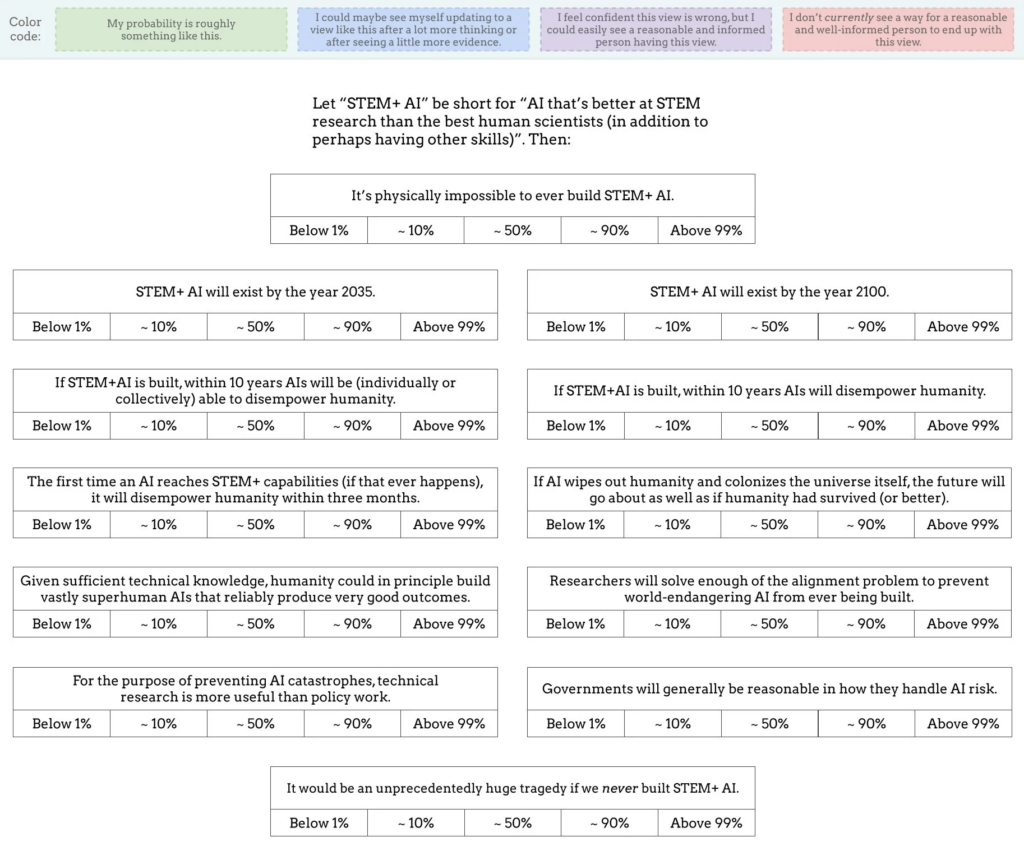
For each of the twelve questions, readers are invited, not just to give a forthright ‘yes’ or ‘no’ answer, but to think probabilistically. They’re also invited to consider which range of probabilities other well-informed people with good reasoning abilities might plausibly assign to each answer.
It’s where Rob’s questions start that I find most interesting.
PCAI, SEMTAI, and PHUAI
All too often, discussions about the safety of future AI systems fail at the first hurdle. As soon as the phrase ‘AGI’ is mentioned, unhelpful philosophical debates break out.That’s why I have been suggesting new terms, such as PCAI, SEMTAI, and PHUAI:
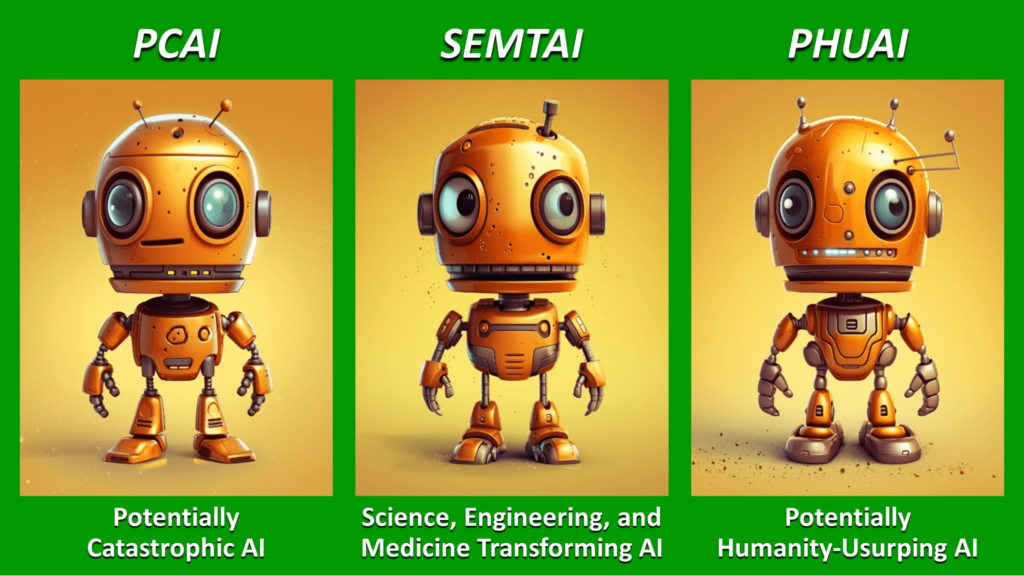
I’ve suggested the pronunciations ‘pea sigh’, ‘sem tie’, and ‘foo eye’ – so that they all rhyme with each other and, also, with ‘AGI’. The three acronyms stand for:
- Potentially Catastrophic AI
- Science, Engineering, and Medicine Transforming AI
- Potentially Humanity-Usurping AI.
These concepts lead the conversation fairly quickly to three pairs of potentially transcendent questions:
- “When is PCAI likely to be created?” and “How could we stop these potentially catastrophic AI systems from being actually catastrophic?”
- “When is SEMTAI likely to be created?” and “How can we accelerate the advent of SEMTAI without also accelerating the advent of dangerous versions of PCAI or PHUAI?”
- “When is PHUAI likely to be created?” and “How could we stop such an AI from actually usurping humanity into a very unhappy state?”
The future most of us can agree as being profoundly desirable, surely, is one in which SEMTAI exists and is working wonders, uplifting the disciplines of science, engineering, and medicine.
If we can gain these benefits without the AI systems being “fully general” or “all-round superintelligent” or “independently autonomous, with desires and goals of its own”, I would personally see that as an advantage.
But regardless of whether SEMTAI actually meets the criteria various people have included in their own definitions of AGI, what path gives humanity SEMTAI without also giving us PCAI or even PHUAI? This is the key challenge.
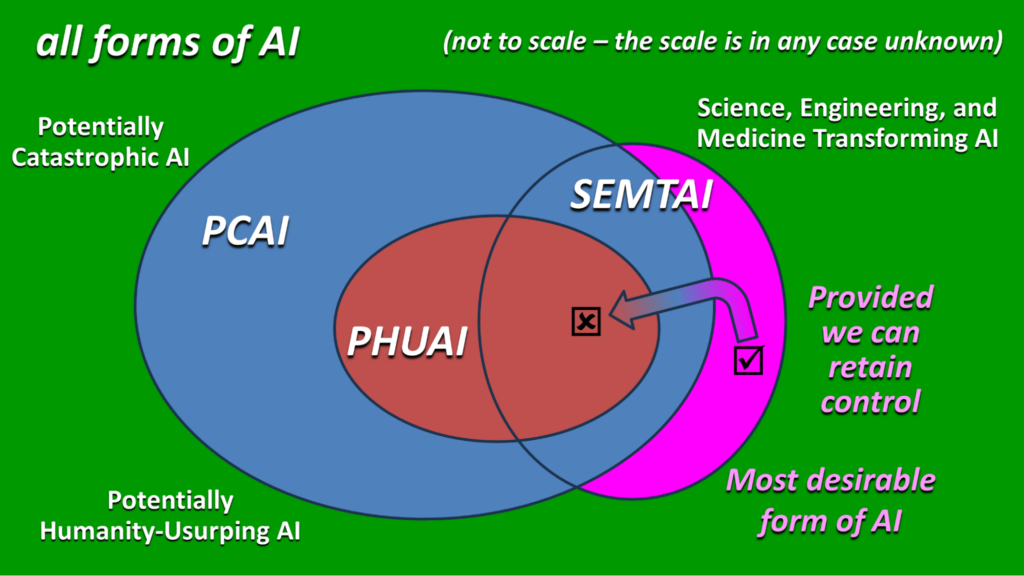
Introducing ‘STEM+ AI’
Well, I confess that Rob Bensinger didn’t start his list of potentially transcendent questions with the concept of SEMTAI.
However, the term he did introduce was, as it happens, a slight rearrangement of the same letters: ‘STEM+ AI’. And the definition is pretty similar too:
Let ‘STEM+ AI’ be short for “AI that’s better at STEM research than the best human scientists (in addition to perhaps having other skills).
That leads to the first three questions on Rob’s list:
- What’s the probability that it’s physically impossible to ever build STEM+ AI?
- What’s the probability that STEM+ AI will exist by the year 2035?
- What’s the probability that STEM+ AI will exist by the year 2100?
At this point, you should probably pause, and determine your own answers. You don’t need to be precise. Just choose between one of the following probability ranges:
- Below 1%
- Around 10%
- Around 50%
- Around 90%
- Above 99%
I won’t tell you my answers. Nor Rob’s, though you can find them online easily enough from links in his main article. It’s better if you reach your own answers first.
And recall the wider idea: don’t just decide your own answers. Also consider which probability ranges someone else might assign, assuming they are well-informed and competent in reasoning.
Then when you compare your answers with those of a colleague, friend, or online acquaintance, and discover surprising differences, the next step, of course, is to explore why each of you have reached your conclusions.
The probability of disempowering humanity
The next question that causes conversations about AI safety to stumble: what scales of risks should we look at? Should we focus our concern on so-called ‘existential risk’? What about ‘catastrophic risk’?
Rob seeks to transcend that logjam too. He raises questions about the probability that a STEM+ AI will disempower humanity. Here are questions 4 to 6 on his list:
- What’s the probability that, if STEM+AI is built, then AIs will be (individually or collectively) able, within ten years, to disempower humanity?
- What’s the probability that, if STEM+AI is built, then AIs will disempower humanity within ten years?
- What’s the probability that, if STEM+AI is built, then AIs will disempower humanity within three months?
Question 4 is about capability: given STEM+ AI abilities, will AI systems be capable, as a consequence, to disempower humanity?
Questions 5 and 6 move from capability to proclivity. Will these AI systems actually exercise these abilities they have acquired? And if so, potentially how quickly?
Separating the ability and proclivity questions is an inspired idea. Again, I invite you to consider your answers.
Two moral evaluations
Question 7 introduces another angle, namely that of moral evaluation:
- 7. What’s the probability that, if AI wipes out humanity and colonizes the universe itself, the future will go about as well as if humanity had survived (or better)?

The last question in the set – question 12 – also asks for a moral evaluation:
- 12. How strongly do you agree with the statement that it would be an unprecedentedly huge tragedy if we never built STEM+ AI?
Yet again, these questions have the ability to inspire fruitful conversation and provoke new insights.
Better technology or better governance?
You may have noticed I skipped numbers 8-11. These four questions may be the most important on the entire list. They address questions of technological possibility and governance possibility. Here’s question 11:
- 11. What’s the probability that governments will generally be reasonable in how they handle AI risk?
And here’s question 10:
- 10. What’s the probability that, for the purpose of preventing AI catastrophes, technical research is more useful than policy work?
As for questions 8 and 9, well, I’ll leave you to discover these by yourself. And I encourage you to become involved in the online conversation that these questions have catalyzed.
Finally, if you think you have a better transcendent question to drop into the conversation, please let me know!
Let us know your thoughts! Sign up for a Mindplex account now, join our Telegram, or follow us on Twitter.
Secure Logging for AI Accountability | Highlights from S2EP2
The Human Flaw: The Power Struggle to Control God
In the last few weeks, we’ve been treated to a wonderful display of backbiting, intrigue, sentimental hogwash, and brazen power grabbing as the leadership of OpenAI embarked upon a delicious bout of internecine warfare. Altman and Brock were out, then in again, three different CEOs stepped up. Cryptic messages, dark secrets, panicked whispers of a runaway AGI – and Microsoft looming over the show, threatening to buy the whole auditorium and kick out the audience.
An Uneasy Alliance
A solution, it seems, has been found. An entente cordiale between the power players, with Altman restored as head of the board and Microsoft taking an ‘observer’ seat. Ilya, whose Iago-like poisoning of the board against Altman, was left posting heart emojis on Twitter and celebrating the return of the man he tried to stab in the front.
Overall, OpenAI’s staff, at least publicly, looked like college students playing at realpolitik before realising these games have consequences, and that powerful forces like Microsoft could scrub OpenAI from the songsheets of the future. And you couldn’t help but wonder at the vaguely cultish, student dorm vibes of it all, and begin to interrogate who exactly is in command of gestating what some say could be the most powerful and society-changing technology ever created.
Drama Sells
There is so much wrong with this whole sordid affair, it’s hard to know where to begin. Mostly, it’s the depressing despair at just how two-faced literally everyone in the corporate world is – publicly and without shame. The complete lack of professionalism displayed on a grand scale at one of the world’s most important companies is cause for alarm. Altman’s ousting was visibly a blatant grab for power, and Altman was quite willing to sell the whole project down the river and gift the vicious zaibatsu that is Microsoft the keys to the kingdom so that he could remain in charge – and continue to prance about as the figurehead of the AI revolution. It was galling.
It’s sad, it’s irresponsible, and worst of all everyone involved is arguing from a position of ‘principle’ that, to this scathing observer, is utterly asinine and false. Make no mistake: this is about money, and this is about power, and – curiously – this is about advertising. The boat-rocking hasn’t tipped the crew overboard, but it’s certainly made some waves. ‘Dangerous new model’, ‘scary powerful’ – is what they say about Q*. Well, you sell the sizzle, not the steak, don’t you? It reestablishes OpenAI at the front of the minds of everyone interested in AI just as the next wave of GPT-products come online.

Speed Up or Slow Down
Of course, I might be wrong. And, even if I’m not, there is a clear schism developing in OpenAI – and across the sector as a whole – about the balance between commercial gain and building AI in a manner ‘that benefits all humanity’ (As OpenAI’s mission statement reads. Don’t be evil, etc. – as Google used to say).
There are the accelerationists, who believe AI will rebuild society and we should strain every sinew to advancing and deploying it in everyday life. There are the decelerationists, who believe the risks associated with unbridled AI threaten to not so much rebuild society, as tear it apart. Altman wants to go faster, Ilya wants to slow down. Altman wants to sell, sell, sell. Ilya wants to build the right way.
For what it’s worth, the decelerationists are wrong. We humans are a pack of Pandoras, and we will open the box. If you don’t do it, someone else will. Capitalism allows for nothing else. If you want to decelerate, fine, resign and go live out what’s left of your normal days on an island. You can’t stop this, Ilya. I applaud principled stances – it’s just a shame that stance was achieved through an attempted coup, and abandoned as soon as they realised it wasn’t going to work.
But for the Altmans out there, or the Altman-fans. Don’t be too quick to think this victory for accelerationism, for commercialism, and for Microsoft (the real winner) is some holy mission to advance AI. It’s only a matter of time before AI-bots are flogged to torment our grandmothers on social media with targeted ads.
Creation Protocols
Fully-aligned AGI is a powerful dream. A benevolent, technipotent, tireless agent that works to administrate, advance, and protect humanity. The question of alignment is essential, especially when it comes to manufacturing intelligences that have any type of independent ‘will’ that can act beyond their given purpose. Just as essential, though, is the problematic use of ‘dumb’ LLMs to proliferate marketing messaging, sales calls, social interactions – and how their continued use could destabilise the fabric of society. OpenAI and other AI manufacturers must contend with both questions. But it’s easy to guess which they will go for when answering to their shareholders.
There is a human flaw. We are building new gods, but they can’t escape the stains of our morality. We humans can’t help but fight over hierarchy and power. We can’t help but want more and more. It would be a cosmic joke if, just as we approach a singularity which could help us transcend as a species, our ape-like tensions and fireside bickering bring it all crashing down. Worse, we may end up creating a promethean monster, aided and abetted by corporations who don’t care what they do. It will be up to us to forgive them.
Let us know your thoughts! Sign up for a Mindplex account now, join our Telegram, or follow us on Twitter.
Spirits in Temporal Limbo | Highlights from S2EP1
SingularityNET (AGIX): A Deep Dive on the Best AI Crypto Marketplace
Introduction
2023 has been a breakout year for artificial intelligence, with the astonishing superpowers of OpenAI’s ChatGPT, Midjourney, and others turning AI into the trending technology of the year and taking most of the shine (and funding) off previous darling Web3.
Soon enough, savvy technologists connected the dots between blockchain technology and AI. They understood that all roads lead to Rome – a decentralized Internet that requires vast resources will need incentives to scale, and a big chunk of it will come from distributed ledger networks.
As a result, there has been a dramatic surge in the price of so-called AI cryptocurrencies such as SingularityNET, which we covered in our Top 20 List of AI Cryptos for 2024 Part 1 and Part 2. Its token, AGIX, shot up from $0.04 at the start of 2023 to a crazy $0.58 in the beginning of February, and currently sits around $0.31 (December 2023).
Mindplex Magazine is a part of the SingularityNET ecosystem, so it’s an honor to tell our readers a bit more about this incredible project. Here’s what you need to know about SingularityNET, Sophia the robot, and the AGIX token.
What is SingularityNET?
SingularityNET is an AI-focused project that leverages blockchain technology to redefine how artificial intelligence is developed, shared, and commercialized. The project’s mission is to go beyond conventional AI by open-sourcing the concept of Artificial General Intelligence (AGI).
SingularityNET has built a decentralized AI marketplace that allows developers to share their AI innovations, collaborate, and directly monetize their AI solutions without using third-party intermediaries.
SingularityNET wants AI, one of the most important technologies that humans have ever worked on, to thrive by creating an environment where innovators can directly sell their AI solutions to consumers. SingularityNET, one of the top AI cryptocurrencies, has a utility token known as AGIX.
At the height of the initial coin offering in December 2017, SingularityNET raised $36 million in one minute. It also received a $25 million investment from LDA Capital in May 2022. Some of SingularityNET’s notable investors include Kosmos Ventures, Fundamental Labs, Zeroth.AI, and Elizabeth Hunker.
Who Created SingularityNET?
SingularityNET was founded in 2017 by a team including current CEO Dr. Ben Goertzel and Dr. David Hanson, two visionaries working at the intersection of AI and blockchain technology. Their credentials and track record in their fields of expertise lend credence to SingularityNET and the wider crypto sphere.
Born in Brazil, Dr. Goertzel is a cognitive scientist and AI researcher who played a crucial role in popularizing the term ‘Artificial General Intelligence’. Apart from serving as the CEO of SingularityNET, he is the chairman and chief scientist of AI software firm Novamente LLC, chairs the OpenCog Foundation, and is the host of the Mindplex Podcast.
David Hanson is a roboticist who founded and serves as the CEO of Hanson Robotics, a Hong Kong-based company known for creating human-like robots like…
Sophia the robot
Hanson Robotics’ best-known work is Sophia, a humanoid robot that has received media attention for reasons such as obtaining Saudi Arabian citizenship, selling an NFT artwork for nearly $700,000, and being appointed the first robot Ambassador for the United Nations Development Programme. She often accompanies Dr. Goertzel at various blockchain conferences across the world such as Token2049 in Singapore, where I had the pleasure of meeting her and conversing a little bit.
The verdict is still out on whether androids dream of electric sheep, but what’s certain is that Sophia is living the life that many people only dream of.
SingularityNET (AGIX) Tokenomics
SingularityNET’s maximum supply is capped at 2 billion AGIX tokens. The utilities of the AGIX token include:
- Governance – most tokens in the crypto sector are being used for governance purposes, and AGIX is no different. AGIX tokenholders can vote on issues affecting the platform’s governance.
- Staking and Rewards – AGIX holders can stake their tokens to receive rewards every 30 days.
- Payment – AGIX tokens are used to settle payments within the SingularityNET ecosystem.
How Does SingularityNET Work?
SingularityNET, which represents one of the many use cases of AI and blockchain, creates a network of AI services where developers showcase and monetize their AI solutions through a decentralized network. On the other end, users can buy AI solutions or test them before making a payment.
The platform wants to eventually build a scalable platform that is less reliant on Ethereum and more chain-agnostic. To make this happen smoothly, SingularityNET utilizes some tools and systems that include Daemon and its SDK.
What is Daemon?
Daemon is an under-the-radar but important component that acts as a sidecar proxy service within the SingularityNET ecosystem. It is more like an assistant that helps to manage tasks related to payments, Ethereum smart contracts, and other blockchain-related tasks.
There are lots of technicalities involved in the functioning of Daemon, but in simpler terms, it ensures smooth and secure interactions between developers and users especially when it comes to financial transactions.
Registry and Multi-Party Escrow Smart Contracts
SingularityNET utilizes two critical smart contracts – Registry and Multi-Party Escrow – for the network to operate fluidly.
Registry, as the name implies, is a database where developers and AI service providers list the important details of their products or services. The Multi-Party Escrow is a smart contract that provides escrow services for users and AI service providers. It also enables cheaper and faster transactions.
SDK
In general, an SDK (software development kit) is a collection of software development tools bundled together in an installable package.
SingularityNET’s SDK is a handy tool for consumers using AI services. It makes it easier for them to connect with SingularityNET services. The SDK also helps by automatically adding the required permissions to the tool used for connecting to these services, making the whole process smoother.
What are SingularityNET’s Main Products?
The core products of the SingularityNET ecosystem are:
SingularityNET AI Marketplace
This is the most important product of SingularityNET because it encapsulates the main ideas of the SingularityNET platform – democratizing and monetizing AI tools on decentralized blockchain architecture.
The SingularityNET AI Marketplace is a decentralized app that lets developers list their AI services and allows consumers to browse their desired AI services and products. The marketplace is simple to use, a major step in getting more people to interact with the platform. Users need to have a Metamask wallet, the gateway to Web3, or a traditional online wallet such as PayPal to make payments on the marketplace.
SingularityNET AI Publisher
The AI Publisher is the backend portal for developers and innovators on SingularityNET. It serves as a gateway for developers to effortlessly showcase and oversee their AI services.
The process is straightforward – developers complete uncomplicated forms and share basic onboarding information about the intended service. It is as easy as filling out a Google form. Those using the portal can access advanced AI applications, beta testing tools, and analytics that track the usage of their AI services.
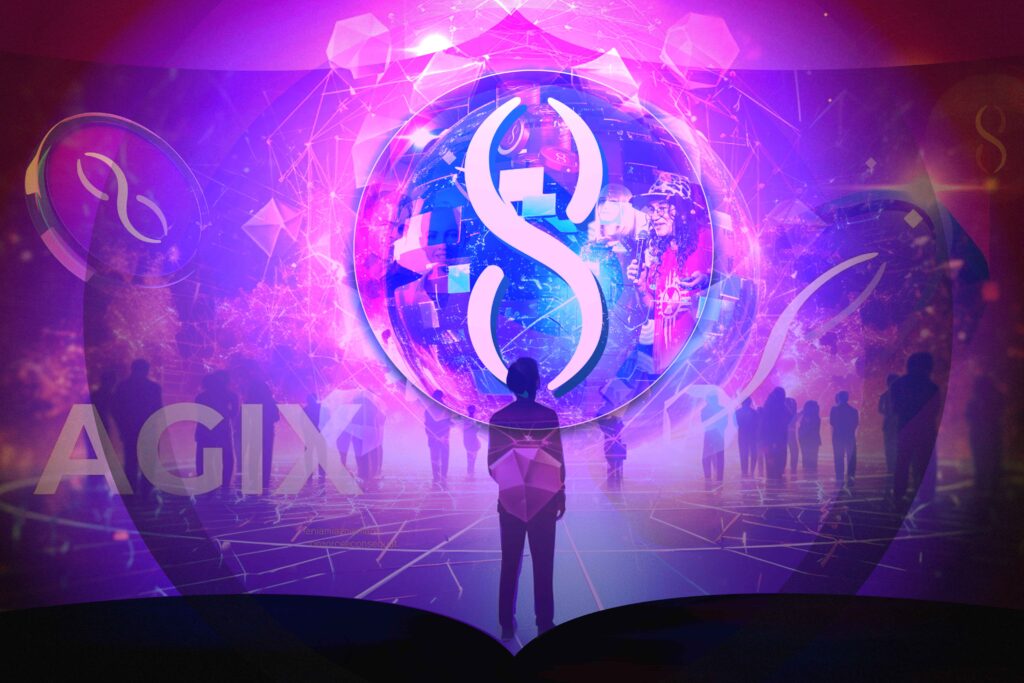
SingularityNET and Cardano’s Partnership
SingularityNET and Cardano (ADA) are long-time collaborators with the shared objective of democratizing and decentralizing access to emerging technologies through blockchain technology.
As a decentralized AI marketplace, SingularityNET has been focusing on improving the interoperability between the Cardano and Ethereum protocols, such as developing a token bridge to enable transactions between the two networks.
In 2023, SingularityNET, in partnership with IOHK (the organization behind Cardano), announced they intend to move a substantial part of SingularityNET’s decentralized protocol from Ethereum to Cardano, by converting ERC-20 AGI tokens to a Cardano-compatible version, and recreating Solidity-based smart contracts in Cardano’s Plutus smart contract language.
Additionally, SingularityNET has introduced staking for its native token, AGIX, on the Cardano blockchain. This feature enables users to engage in and contribute to the expansion and wider adoption of the Cardano ecosystem.
AGIX Staking
SingularityNET has a staking platform where AGIX holders can lock up their AGIX holdings in exchange for incentives. Users can stake their AGIX tokens for 30 days. After that, they can redeem their rewards and staked AGIX tokens or roll them over for the next staking period.
In November 2023, SingularityNET rolled out staking on the Cardano blockchain, in addition to Ethereum.
Conclusion
SingularityNET is a blossoming AI-powered blockchain ecosystem that is wildly ambitious in its goals and enjoys the backing of a strong team and partners such as the Cardano and Ethereum communities. With artificial intelligence still in its infancy and the next crypto bull market potentially shaping up for 2024, the platform is only getting started, and you can stay up to date with all its latest developments here.
Let us know your thoughts! Sign up for a Mindplex account now, join our Telegram, or follow us on Twitter.
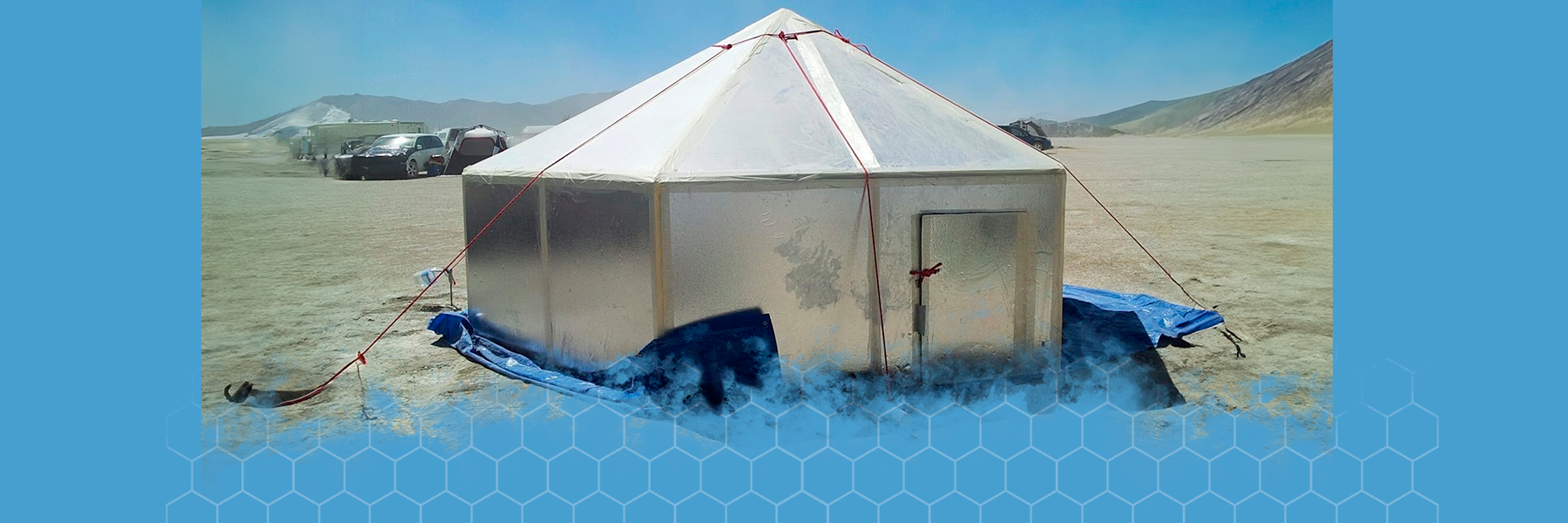




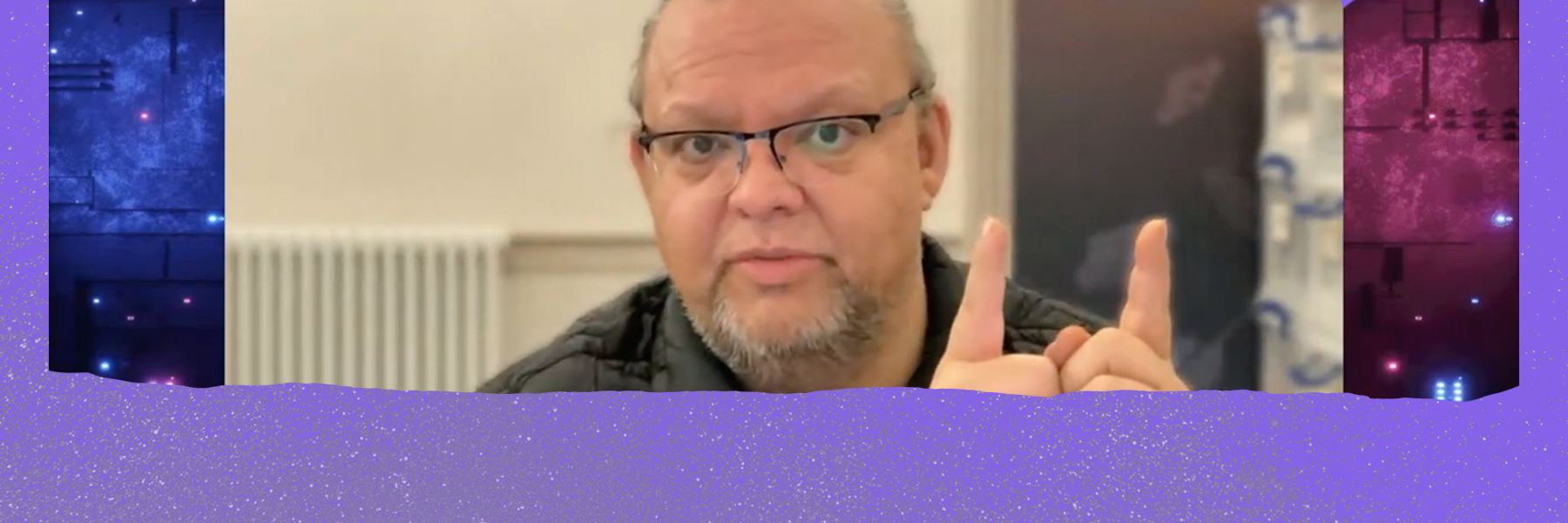





.png)

.png)


.png)